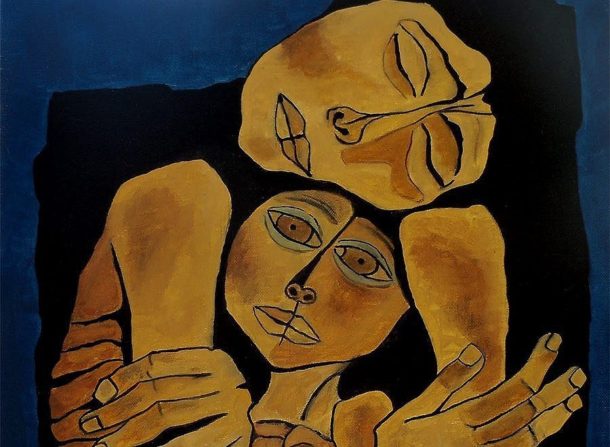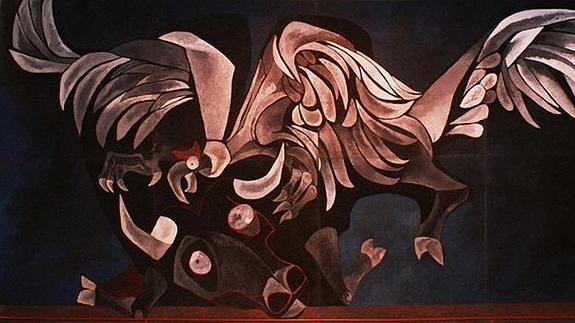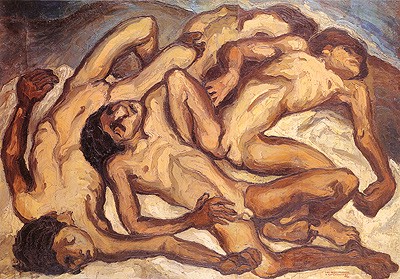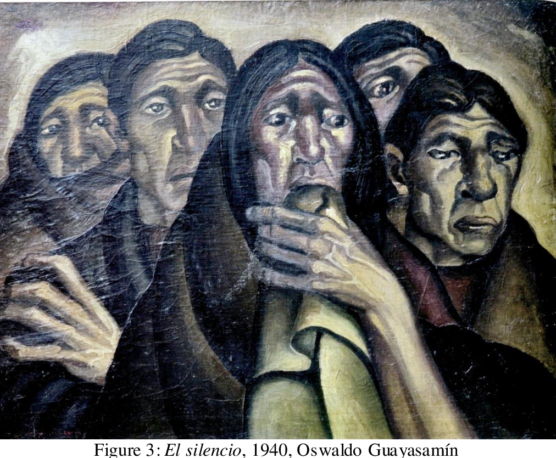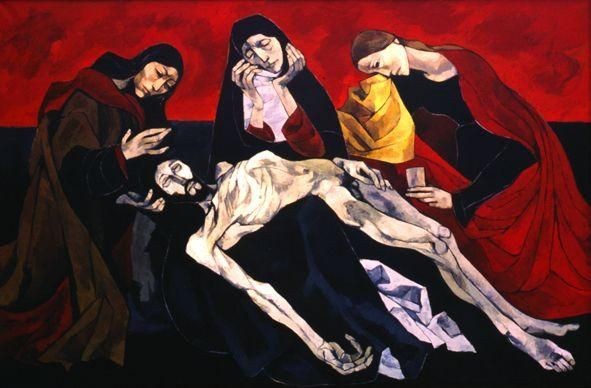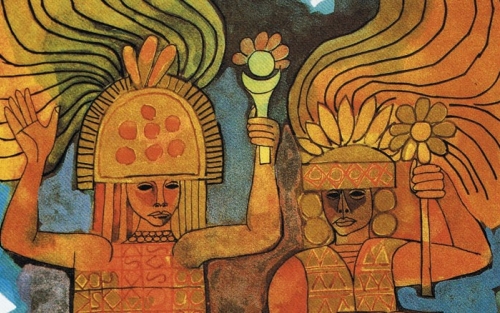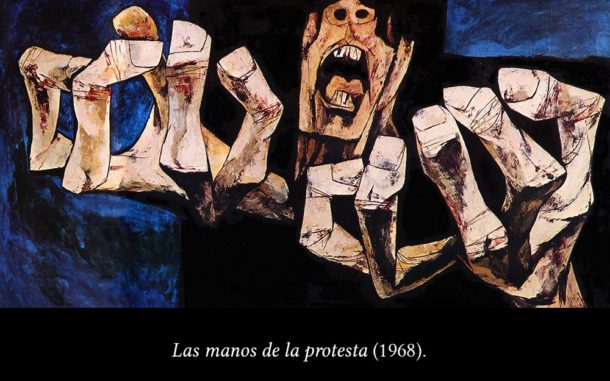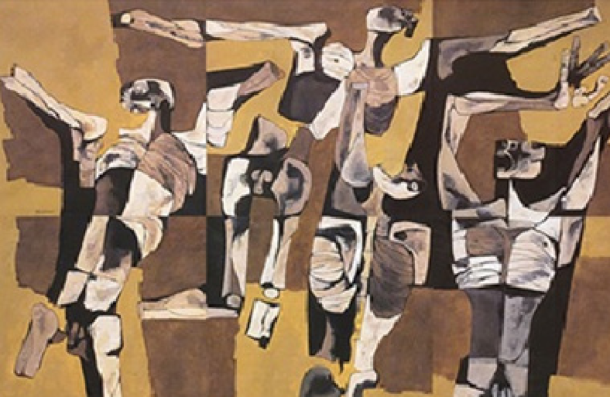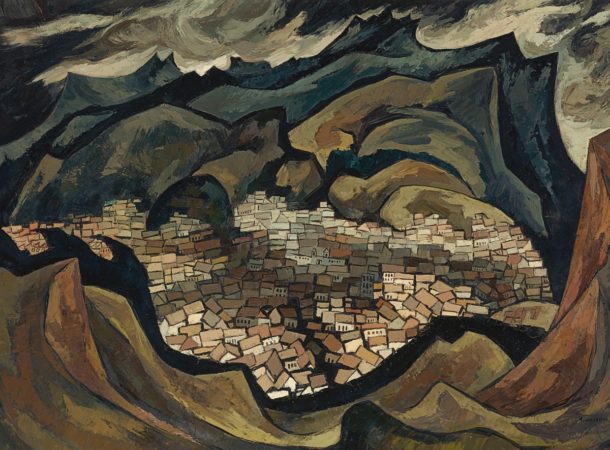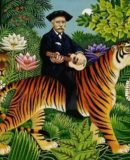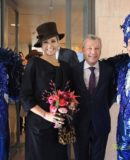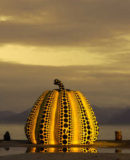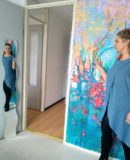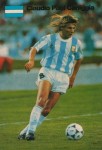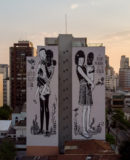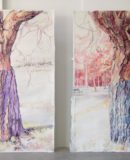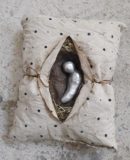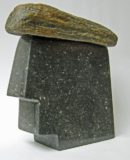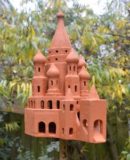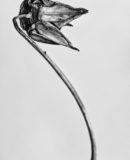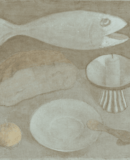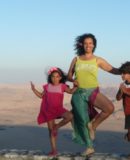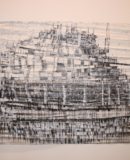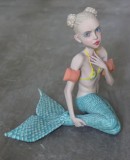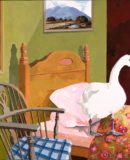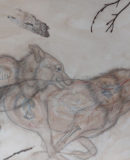World Fine Art Professionals and their Key-Pieces, 287 - Oswaldo Guayasamín
World Fine Art Professionals and their Key-Pieces, 287 – Oswaldo Guayasamín
Oswaldo Guayasamín is one of the most famous artists from Latin America. He came from a humble family in a poor neighborhood in Quito, Ecuador. He became an expressionist artist who portrayed the situation of the common people in many ways.
You can see the influence of Picasso, especially the Picasso from the cubist period. Cubism is present in almost all of Guayasamín’s works.
Watercolors
Guayasamín was born in Quito, Ecuador, to parents of Quechua descent. His family was poor and his father worked as a carpenter for most of his life. He was the first child of ten children. When he was young, he enjoyed drawing caricatures of his teachers and the children he played with. He showed an early love for art. He started drawing and painting from the age of six. He loved to make watercolors.
In his youth he worked as a taxi and truck driver to make ends meet. This gave him the opportunity to study the School of Fine Arts in Quito. He graduated as a painter and sculptor. He also studied architecture there. He held his first exhibition when he was 23, in 1942. While in college, his best friend died during a demonstration in Quito. This incident would later inspire one of his paintings, ‘Los Niños Muertos’ (The Dead Children). This event also helped him shape his vision of the people and the society in which he lived.
La Galería Caspicara, an art gallery started by Eduardo Kingman in 1940, was one of the first places where Guayasamín could show his work. He gained recognition for his theme of oppression in the lower social classes. Especially ‘El Silencio’ (The Silence) was a painting from this exhibition that stood out. The painting marks a shift in Guayasamín’s work from storytelling to focusing on human suffering.
Traveling in Latin America
Guayasamín traveled with his friend Jose Clemente Orozco, a Mexican fellow painter, from 1942 to 1943 through the United States and Mexico. In the following years they traveled on to various South American countries. They visited Peru, Brazil, Chile, Argentina, Uruguay, among others. During these travels, Guayasamín observed the indigenous lifestyle and poverty that he subsequently captured in his paintings. In 1957, at the fourth São Paulo Biennale, he was named the best South American painter.
In 1988, the Congress of Ecuador asked Guayasamín to paint a mural depicting Ecuador’s history. Because of his controversial nature, the United States government criticized him for one of the figures in the painting showing a man in a Nazi helmet with the letters ‘CIA’ on it.
His latest exhibitions in 1995 were opened by him personally in the Palais du Luxembourg in Paris and in the Palais de Glace in Buenos Aires. In Quito a museum was opened with his work, Casa Museo Guayasamín.
National hero
Guayasamín is considered by many to be a national hero. During his lifetime Guayasmín became friends with the famous writers Gabriel Garcia-Marquez and Pablo Neruda, politicians François Mitterrand and Fidel Castro, human rights activist Rigoberta Menchú and singer Mercedes Sosa. The artist died on March 10, 1999 in Baltimore. He once said “Mantengan encendida una luz que siempre voy a volver”, or “Keep a lamp alight because I will always return”. His murals can be seen at the UNESCO headquarters in Paris and at the Adolfo Suárez airport in Madrid.
He received an award for ‘A Lifetime of Work for Peace’ from the UNESCO. His death on March 10, 1999 was considered a great loss to Ecuador and took place in the midst of a political and socio-economic crisis, with strikes by the indigenous people and other sectors of society.
La Capilla del Hombre
In 2002, three years after his death, Guayasamín’s masterpiece, La Capilla del Hombre (‘The Chapel of Man’), was completed and opened to the public. The chapel is intended to document not only man’s cruelty to man, but also the potential for greatness within mankind. It is located in the same location as Guayasamín’s house in the hills overlooking Quito.
Images
1) Maternidad, 2) Toro y condor, 3) Los Niños Muertos, 4) El silencio, 5) Las tres mujeres en la tumba de Cristo, 6) Oswaldo Guayasamín, 7) Reyes nativos, 8) Las manos de la protesta, 9) Los mutilados, 10) Quito verde
Disclaimer: The views, opinions and positions expressed within this guest article are those of the author Walter van Teeffelen alone and do not represent those of the Marbella Marbella website. The accuracy, completeness and validity of any statements made within this article are not guaranteed. We accept no liability for any errors, omissions or representations. The copyright of this content belongs to Walter van Teeffelen and any liability with regards to infringement of intellectual property rights remains with the author.

